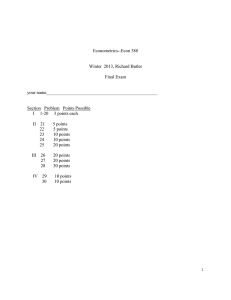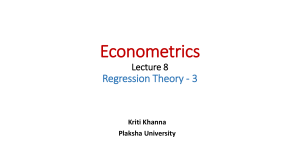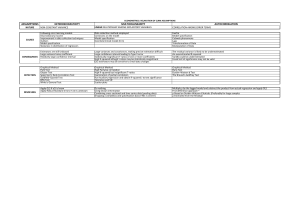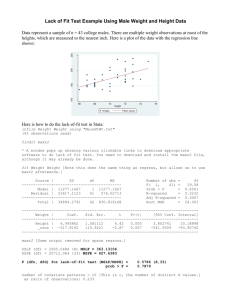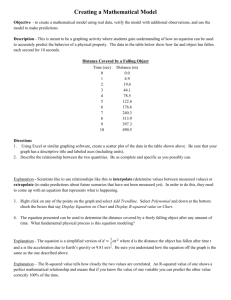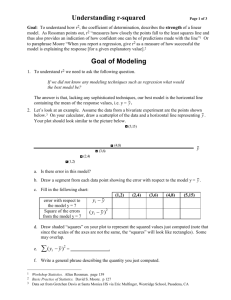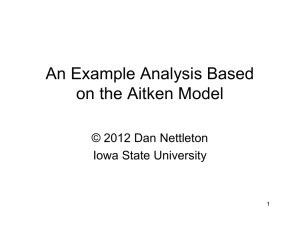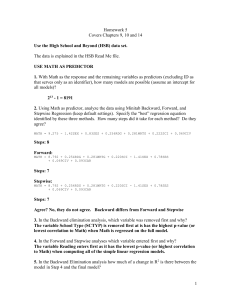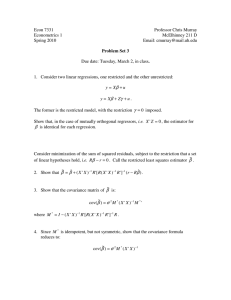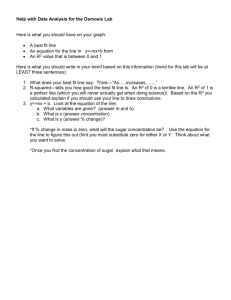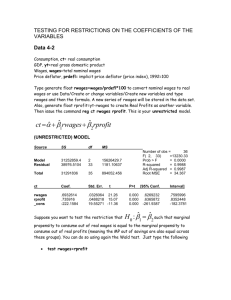Study Guide Two
advertisement
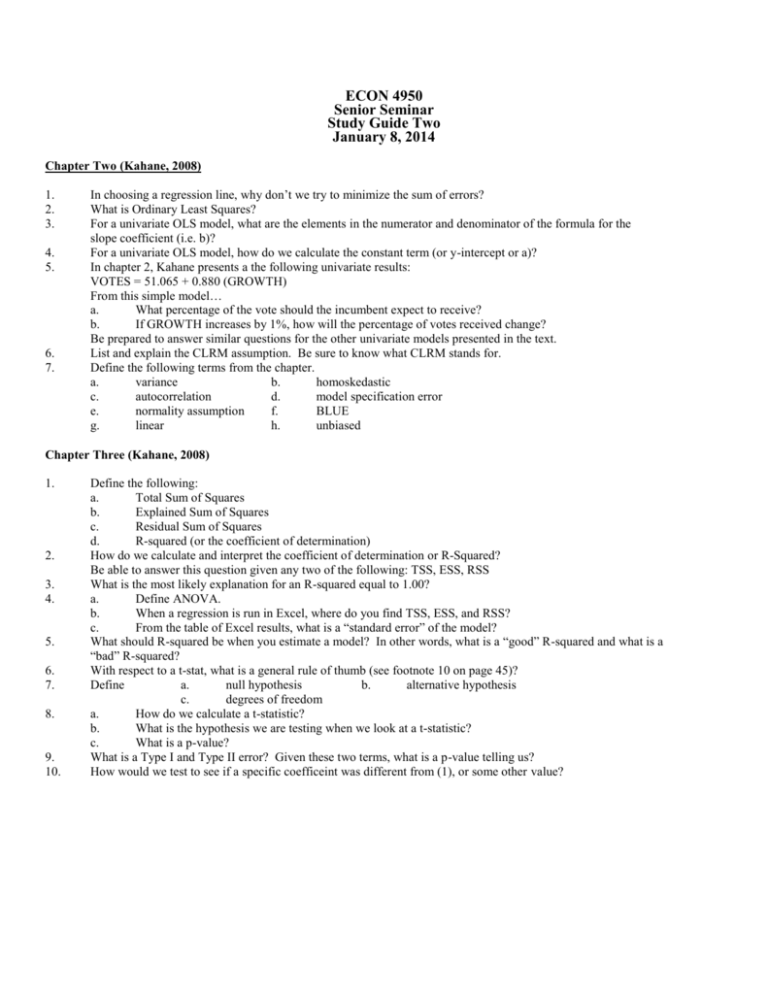
ECON 4950 Senior Seminar Study Guide Two January 8, 2014 Chapter Two (Kahane, 2008) 1. 2. 3. 4. 5. 6. 7. In choosing a regression line, why don’t we try to minimize the sum of errors? What is Ordinary Least Squares? For a univariate OLS model, what are the elements in the numerator and denominator of the formula for the slope coefficient (i.e. b)? For a univariate OLS model, how do we calculate the constant term (or y-intercept or a)? In chapter 2, Kahane presents a the following univariate results: VOTES = 51.065 + 0.880 (GROWTH) From this simple model… a. What percentage of the vote should the incumbent expect to receive? b. If GROWTH increases by 1%, how will the percentage of votes received change? Be prepared to answer similar questions for the other univariate models presented in the text. List and explain the CLRM assumption. Be sure to know what CLRM stands for. Define the following terms from the chapter. a. variance b. homoskedastic c. autocorrelation d. model specification error e. normality assumption f. BLUE g. linear h. unbiased Chapter Three (Kahane, 2008) 1. 2. 3. 4. 5. 6. 7. 8. 9. 10. Define the following: a. Total Sum of Squares b. Explained Sum of Squares c. Residual Sum of Squares d. R-squared (or the coefficient of determination) How do we calculate and interpret the coefficient of determination or R-Squared? Be able to answer this question given any two of the following: TSS, ESS, RSS What is the most likely explanation for an R-squared equal to 1.00? a. Define ANOVA. b. When a regression is run in Excel, where do you find TSS, ESS, and RSS? c. From the table of Excel results, what is a “standard error” of the model? What should R-squared be when you estimate a model? In other words, what is a “good” R-squared and what is a “bad” R-squared? With respect to a t-stat, what is a general rule of thumb (see footnote 10 on page 45)? Define a. null hypothesis b. alternative hypothesis c. degrees of freedom a. How do we calculate a t-statistic? b. What is the hypothesis we are testing when we look at a t-statistic? c. What is a p-value? What is a Type I and Type II error? Given these two terms, what is a p-value telling us? How would we test to see if a specific coefficeint was different from (1), or some other value?
